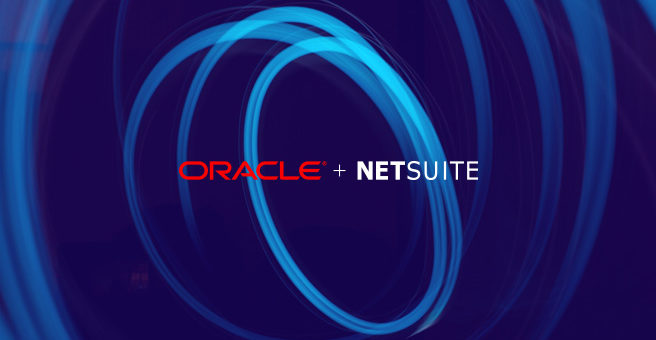In this blog, we’ll take a look at some new features from NetSuite’s latest release. Before Release 2017.1, Journal Entries were entered in NetSuite via either one of two transaction types: Standard or Intercompany Journal Entries. Standard, for journals within the same subsidiary and intercompany for journals moving funds between two subsidiaries.
Now as of 2017.1, NetSuite introduced the new Advanced Intercompany Journal Entry transaction and a host of new exciting features are now available to the user.
An Advanced Intercompany Journal Entry, AICJE for short, includes all the usual operations of the past journal entries in addition to new time-saving functions. While legacy Intercompany Journals are limited to a maximum of two subsidiaries per transaction, the AICJE will finally allow the user to specify a single originating subsidiary and multiple destination subsidiaries per journal.
This feature is a welcome addition to NetSuite’s already strong intercompany functionalities.
The new features require little if any setup: Under Setup > Accounting > Accounting Preferences> Items/Transactions, set the default accounts for two new fields DEFAULT ICJE AUTO BALANCE RECEIVABLES ACCOUNT and DEFAULT ICJE AUTO BALANCE PAYABLES ACCOUNT. For my test, I used an “Other Current Liability” and “Other current Asset” account types.
The first thing you will notice when accessing the new feature, is there is no longer a Currency dropdown at the header level. Why? Well life just got much better for accountants because now they can specify currency at the line level.
Not just base currency either, any currency available in your system. Speaking of subsidiaries, to be able to create an Advanced Intercompany Journal, the user will have to have full access to that subsidiary (viewing them is handled differently).
For example, if an ICJE has four different subsidiaries and you have access to only two of them, you will see the amounts and lines pertaining only to those two subsidiaries.
Once the subsidiary at the header level is selected, NetSuite automatically populates the first line with the same subsidiary. You can change this, but NetSuite will prompt you to verify the correction, should your journal be out of balance.
For the non-accountant types, if the Automated Intercompany Management feature is enabled, you now have the new Auto Balance button at your disposal. With one click, the Auto Balance feature now automatically adds elimination lines to balance the transaction. For example, I manually entered the following:
| Subsidiary | Debit | Credit |
|---|---|---|
| US | Cash 1000 | |
| Canada | Cash 200 | |
| Armenia | Cash 200 | |
| Portugal | Cash 600 |
And with one click, the following lines were added to complete the transaction:
| Subsidiary | Debit | Credit | Due to | Due From |
|---|---|---|---|---|
| US | Cash 1000 | |||
| US | Interco Receivable 200 | Canada | ||
| US | Interco Receivable 200 | Armenia | ||
| US | Interco Receivable 200 | Portugal | ||
| Canada | Cash 200 | |||
| Canada | Interco Payable 200 | US | ||
| Armenia | Cash 200 | |||
| Armenia | Interco Payable 200 | US | ||
| Portugal | Cash600 | |||
| Portugal | Interco Payable 600 | US |
As you can see, this is a very handy timesaver. There’s even a nifty undo Auto Balancing feature as well, just in case.
Expect all the usual fields from the other journal entry transactions to be there. A new addition to the Eliminations feature is a required Due To/From Subsidiary. If the line is the From Subsidiary, the selected subsidiary must be added as one of the To Subsidiaries in the transaction before saving.
If the line is the To Subsidiary line, this column value must be the From Subsidiary.
The same 1,000-line limit through the User Interface is still in effect, as in the other journal transactions. NetSuite will only allow for a maximum of 1,000 lines to be entered per Journal Entry through User Interface.
This limitation exists for performance reasons and cannot be changed. However, CSV and SuiteScript though still limited, can reach up to 10,000 lines.
New and current users in 2017.1 and 2017.2 will be able to retain the legacy intercompany transaction as well as the addition of the new Advanced Intercompany Journal transaction.
For new customers as of 2018.1, legacy will no longer be offered. This is quite the departure for NetSuite where existing functionality is not usually deprecated at such an aggressive pace. This could only mean that NetSuite is investing heavily in this functionality and are confident it will not only meet all intercompany needs but will surpass them.
For now, only SuiteScript is available for this new record. Full platform exposure via (CSV/Web Services) will become available in 2017.2.
Please see the chart below provided by NetSuite for the full details:
| Release | New OneWorld Account | Existing OneWorld Account |
|---|---|---|
| 2017.1, 2017.2 | Legacy + Advanced | Legacy + Advanced |
| 2018+ | Advanced Only | Legacy + Advanced |
| Far Future (TBD) | Advanced Only | Advanced Only with Migration |
Share your experience with the new Advanced ICJE feature!
Related Posts:
Get Started Now
The easiest way to get started is to contact Techfino today. If you’d like a little more information first, you can download our ContinuedSuccess Whitepaper. Either way, we hope you’ve found this guide helpful and hope that we can further assist you on your path to leveling up your NetSuite Support.




